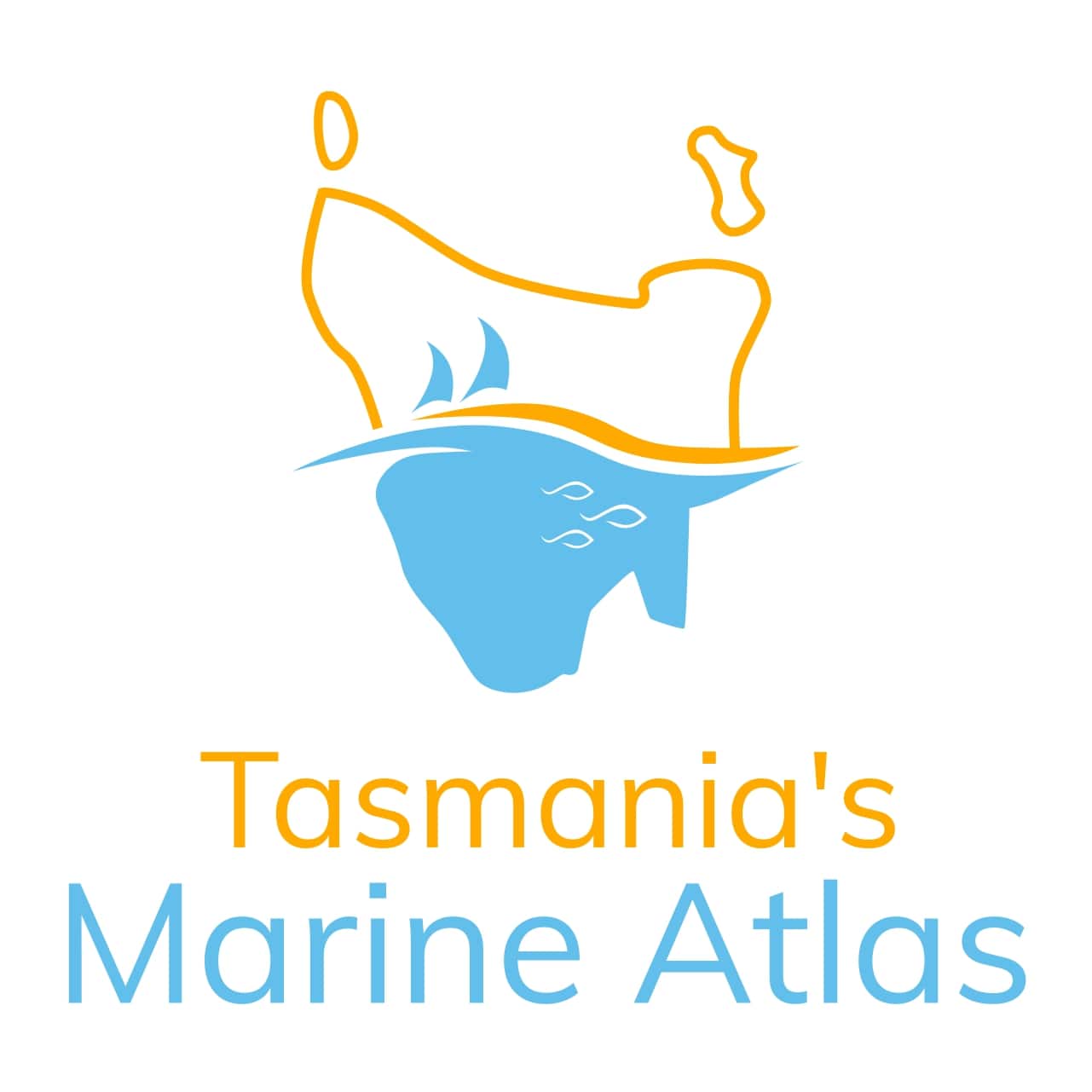Macrocystis pyrifera
Type of resources
Topics
Keywords
Contact for the resource
Provided by
Years
-

Location of the Giant Kelp (Macrocystis pyrifera) outplant trial sites. This is part of a collaborative project between IMAS, The Nature Conservancy, CSIRO and NRM South to restore giant kelp forests in Tasmania.
-
Out-of-range observations of significant rafts of giant kelp (Macrocystis pyrifera) washing ashore in southern NSW in winter 2020. On 9 August 2020, two local marine naturalists on the south coast of New South Wales, Australia noticed a significant amount of a large unfamiliar kelp washed up on a local beach. Following some quick confirmations via phone and email, it was revealed that the unfamiliar seaweed was giant kelp (Macrocystis pyrifera): a species whose closest known populations are ~450 km away to the south (in Tasmania and western Victoria) and whose transport to New South Wales would have required oceanic rafting over several weeks and hundreds of kilometres against the prevailing south-flowing East Australian Current. Subsequent community-led searches over the following days confirmed four more locations of often-substantial amounts of giant kelp wrack, as well as many more anecdotal and unconfirmed accounts.
-

This record provides an overview of the scope and research output of NESP Marine Biodiversity Hub project E7 - "Assessing the feasibility of restoring giant kelp beds in eastern Tasmania". For specific data outputs from this project, please see child records associated with this metadata. -------------------- This project will extend an externally funded project conducted through UTAS commencing in 2018 to select for thermally tolerant and low-nutrient-tolerant giant kelp (Macrocystis pyrifera) genotypes, and to examine effects of acclimation of selected genotypes by pre-exposure to warm, nutrient-poor conditions. The proposed project will outplant pre-exposed selected genotypes of giant kelp as micro-sporophytes in an experiment with and without provision of an added source of nutrient. The work is designed to assess the feasibility of this approach as a means to develop minimum patch sizes for giant kelp that can be self-replacing and self-expanding, thus providing restoration and future climate-proofing options for this EPBC-listed marine community. Planned Outputs • Experimental data from macrocystis restoration • Final report
-

An aerial survey was conducted for giant kelp (Macrocystis pyrifera) on the east coast of Tasmania from Eddystone Point to Southeast Cape. This survey represents part of a series of similar surveys, with historic aerial surveys having been conducted in 1986 and 1999. The survey was conducted via light aircraft. Areas of visable Macrocystis pyrifera beds were marked on topographical land tenure maps using landmarks as references, and complimentary photo footage was collected.
-

An aerial survey of giant kelp (Macrocystis pyrifera), was carried out on the east coast of Tasmania from Musselroe Bay to Southeast Cape. This survey represents part of a series of similar surveys, with historic aerial surveys having been conducted in 1986, 1999 and 2009. This survey was conducted via light aircraft in Nov-Dec 2019, and recorded areas of visible surface canopy cover of giant kelp. Canopy areas were scribed in-flight onto 1:50,000 topographic maps (TASMAP 2017), and complimentary photo and video footage was collected. Canopy areas were digitised with reference to photo, video and map data within QGIS 3.4, and boundaries were checked against Seamap Australia seafloor habitats (Lucieer et al. 2017) and bathymetric data (Smith 2016). Each bed was attributed a broad and fine scale location, density and reliability estimate (see attached report for details). This survey was completed with funding from Pennicott Wilderness Journeys, Tassal and IMAS, and equal in-kind support by Marine Solutions and Seacare Inc.
-
This record described kelp growth and ecophysiological data relevant to the thermal tolerance of specific warm-tolerant and 'normal' family-lines of giant kelp (Macrocystis pyrifera) from Tasmania, Australia. Australia’s giant kelp forests are listed as a Threatened Ecological Community under the Environment Protection and Biodiversity Conservation Act 1999. Habitat restoration is a potential tool for the conservation and management of giant kelp ecosystems. For habitat restoration to be effective, the cause of habitat decline must be understood and overcome. This is problematic when climate change is driving habitat loss since it cannot be reversed or ameliorated prior to restoration. A previous NESP project led by this team (Project E7, Marine Biodiversity Hub) identified warm-tolerant strains of giant kelp from remnant patches in eastern Tasmania, where the species has experienced precipitous declines due to ocean-warming. These strains have high potential to assist with ‘future-proofing’ kelp forest restoration, however it is still unclear what the physiological mechanisms are that provide their improved thermal tolerance. This work cultivated the warm-tolerant strains of giant kelp previously identified, along with giant kelp strains of normal tolerance, at both cool (16 °C) and warm temperatures (20 °C). The juvenile kelp was then harvested, and a suite of physiological traits that may be responsible for their differences in thermal tolerance were examined. These included nutrient usage (carbon and nitrogen content), cellular membrane processes (fatty acid contents), and photosynthesis (PAM fluorometry and photosynthetic pigments). The cultivation trials again illustrated the improved ability of the warm-tolerant strains to develop at stressful warm temperatures relative to normal giant kelp. This work demonstrated for their first time that the improved thermal performance of these strains may extend to the development and fertilisation of the earlier kelp ‘gametophyte’ life-stage. Despite the clear differences in growth between the two test groups, the physiological assessments illustrated a complex pattern of responses, some of which are contrary to expected based on prior knowledge of thermal performance in kelps. Nonetheless, these results indicate that the warm-tolerant strains of giant kelp have a greater capacity to alter the composition of their fatty acids and may be more efficient users of nitrogen (a key nutrient for growth and development). This new information will help inform ongoing kelp breeding and selection programs for future-proofing kelp restoration in Australia and globally. The improved understanding of the physiology of kelp thermal tolerance might also help with identifying individuals and populations of Macrocystis, and other kelps, that may be resilient to (or especially threatened by) ocean warming and climate change.
-
The main aim of this research program was to determine the potential for reducing the density of urchins to encourage the return of seaweeds and an improvement in urchin roe quality and quantity from remaining urchins. Tasmanian Sea Urchin Developments used two widely-separated sub-tidal experimental lease areas. One of these areas was at Meredith Point, on the east coast, and the other at Hope Island, on the south coast. Both sites had been subject to some overgrazing by urchins. At Meredith Point, the study area was divided into plots containing urchins at three densities: artificially enhanced, continually harvested and control (undisturbed). At Hope Island, controlled clearings of urchins and limpets from barrens areas were conducted. Recovery of vegetation was monitored as well as urchin roe quality and quantity. The data represented by this record was collected at Hope Island, and includes results from an inital survey collected at the site before the main study commenced.
-
A project investigating the restoration of string kelp (Macrocystis pyrifera) habitat on Tasmania's east and south coasts. Macroalgae, fish and invertebrate counts were collected as part of the project using the Edgar Barrett transect technique in the Derwent Estuary and in the Mercury Passage on the South East Tasmania. Other fish, invertebrate and macroalgal data was also collected.
-

Australia's kelp forests are among the most productive and biodiverse ecosystems on the planet. Giant kelp (Macrocystis pyrifera) can develop extensive forests and create dense surface canopies, providing a variety of ecological functions and ecosystem services including carbon sequestration, nutrient cycling and habitat provision. Giant Kelp forests naturally fluctuate from year to year and experience dramatic interannual variability. However, over the last 4–5 decades, a ~95% loss of surface-canopy forests has been recorded in eastern Tasmania due to a combination of ocean warming, changing currents, recruitment limitation, and intense herbivory by expanding sea urchin populations. While kelp forests also occur on mainland southeastern Australia, relatively little is known about the ecology of Giant Kelp in this region. In recognition of the species' rapid declines in eastern Tasmania and the lack of data elsewhere, Giant Kelp communities in Australia were declared an endangered marine community in August 2012 under the EPBC Act. Given the conservation status of Australian Giant Kelp communities, ongoing threats, and absence of a sanctioned recovery plan, there is an urgent need to establish the current extent for Giant Kelp in Australia, and to monitor changes over time. Historical aerial surveys techniques are costly, logistically difficult, and prone to cloud interference - impairing the ability of resource managers to consistently assess Giant Kelp abundance and distribution across jurisdictions. Recent improvements satellite remote sensing techniques now offer a reliable and cost-effective means for long-term kelp canopy monitoring at broad spatial and temporal scales. This project mapped the surface canopy of Giant Kelp forests from 2016 to 2023 using 3 m resolution satellite imagery across the known historical range in Tasmania, Victoria, southern New South Wales, and eastern South Australia. The mapping workflow was divided into the following broad steps: • Generate a precise land/water mask to exclude intertidal areas • Create a first-pass machine learning (ML) classification using Sentinel-2 (10 m) imagery • Acquire and process PlanetScope (3 m) daily imagery • Train and evaluate a second-pass ML model for kelp detection using PlanetScope imagery • Visualise results via an interactive Earth Engine application to enable input from expert review ---DATA DESCRIPTION--- • KelpWatch_V3_KelpExtent_ALL_shp.zip: binary kelp extent - by year x zone (near-coast vs open water) • KelpWatch_V3_KelpProb_ALL.zip: continuous probability of kelp - by year x zone x threshold (low vs high)
-

This record provides an overview of the NESP Marine and Coastal Hub bridging study - "Future-proofing restoration & thermal physiology of kelp". For specific data outputs from this project, please see child records associated with this metadata. -------------------- Kelp forests create complex habitats that support a diverse and productive community of marine life. They underpin coastal food-webs, fisheries, and a suite of other ecosystem services including nutrient and blue carbon cycling. Across much of the world, kelp forests are in decline and under threat from stressors including urbanisation, overgrazing, ocean warming, and marine heatwaves driven by climate change. Australia’s giant kelp (Macrocystis pyrifera) forests are listed as a Threatened Ecological Community under the Environment Protection and Biodiversity Conservation Act 1999. Habitat restoration is a potential tool for the conservation and management of giant kelp ecosystems. Given the direct impacts of climate change and ocean warming, there is growing recognition of the need for habitat restoration to be ‘future proofed’. For restoration to be effective, the cause of habitat decline must be understood and overcome. This is problematic when climate change is driving habitat loss since it cannot be reversed or ameliorated prior to restoration. A previous NESP project led by this team (NESP Marine Biodiversity Hub Project E7) identified warm-tolerant strains of giant kelp from remnant patches in eastern Tasmania, where the species has experienced precipitous declines due to ocean-warming. These strains have high potential to assist with ‘future-proofing’ kelp forest restoration, however it is still unclear what the physiological mechanisms are that provide their improved thermal tolerance. It is also unknown whether cross-breeding the identified warm-tolerant giant kelp strains will affect and potentially improve their thermal tolerance capacity. This project explored the physiology of kelp thermal performance, specifically the mechanisms potentially responsible for the warm water tolerance identified in particular giant kelp strains. It confirmed the improved ability of the warm-tolerant strains to develop at stressful warm temperatures relative to normal giant kelp, and demonstrated for the first time that their improved thermal performance may extend to the development and fertilisation. The outcomes progress toward the identification of populations of Australian kelp that may be resilient to (or especially threatened by) ocean warming and climate change. Outputs • Ecophysiological measurements from laboratory experiments of warm-tolerant vs average giant kelp genotypes [dataset] • Final Project Report including a short summary of recommendations for policy makers of key findings [written]
 IMAS Metadata Catalogue
IMAS Metadata Catalogue